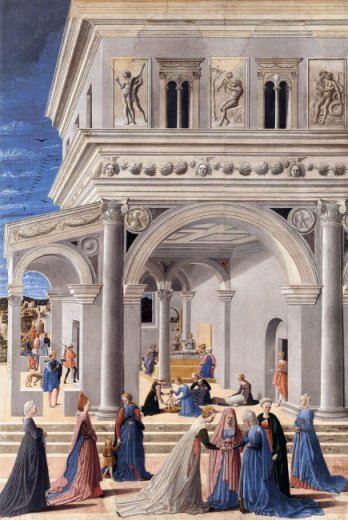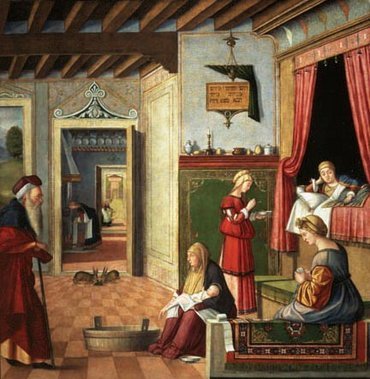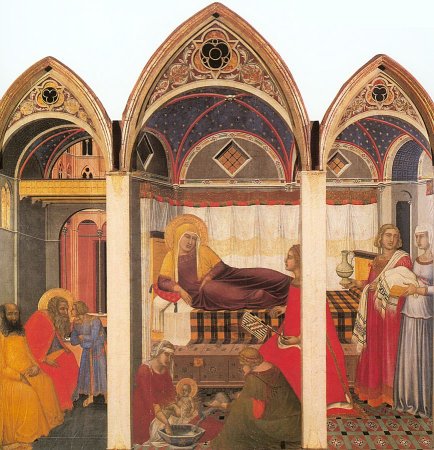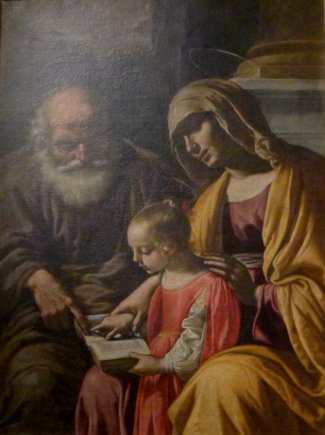|
The Birth of the Virgin |
|
|
|
|
|
The Birth of the Virgin is a popular theme in art. Joachim is described as a 'wealthy man', and many artists have made the most of that in their depiction of the house, though few have gone as far as Fra Carnevale! Historians have found them a useful resource for studying medieval house interiors. There are plenty of images to choose from - please excuse me if I include one or two rather oddball ones. Altdorfer's merry-go-round of dancing angels in a gothic church probably tops this list. In Legends of the Madonna Anna Jameson describes the theme thus, and it is hard to improve on this: 'The whole scene . . . is sure to come home to the bosom of the observer. The most important event in the life of a woman, her most common and yet most awful experience, is here so treated as to be at once ennobled by its significance and endeared by its thoroughly domestic character.' |
|
|
|
|
|
|
|
|
|
|
|
The Protoevangelium has much to say about the
infancy of the Virgin, but these events are rarely depicted. Here is what
it says: 6. And the child grew strong day by day; and when she was six months old, her mother set her on the ground to try whether she could stand, and she walked seven steps and came into her bosom; and she snatched her up, saying: As the Lord my God lives, you shall not walk on this earth until I bring you into the temple of the Lord. And she made a sanctuary in her bed-chamber, and allowed nothing common or unclean to pass through her. And she called the undefiled daughters of the Hebrews, and they led her astray. And when she was a year old, Joachim made a great feast, and invited the priests, and the scribes, and the elders, and all the people of Israel. And Joachim brought the child to the priests; and they blessed her, saying: O God of our fathers, bless this child, and give her an everlasting name to be named in all generations. And all the people said: So be it, so be it, amen. And he brought her to the chief priests; and they blessed her, saying: O God most high, look upon this child, and bless her with the utmost blessing, which shall be for ever. And her mother snatched her up, and took her into the sanctuary of her bed-chamber, and gave her the breast. And Anna made a song to the Lord God, saying: I will sing a song to the Lord my God, for He has looked upon me, and has taken away the reproach of mine enemies; and the Lord has given the fruit of His righteousness, singular in its kind, and richly endowed before Him. Who will tell the sons of Reuben that Anna gives suck? Hear, hear, you twelve tribes of Israel, that Anna gives suck. And she laid her to rest in the bed-chamber of her sanctuary, and went out and ministered unto them. And when the supper was ended, they went down rejoicing, and glorifying the God of Israel. Later artists sometimes depicted the childhood of the virgin, ignoring by and large the story that she went to the temple aged three. These images tended towards sentimentality, as in this painting by Rutilio and Domenico Manetti in the Pinacoteca in Siena. Joachim and Anna are teaching the Virgin to read. |
|
|
|
|






